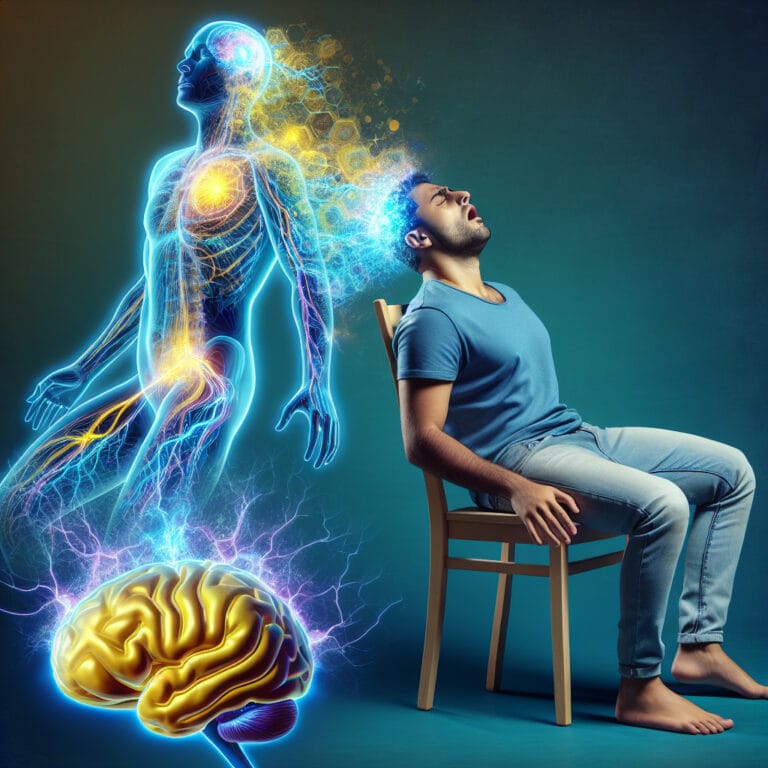
Understanding Cataplexy: Definition, Causes, and Treatment
Table of Contents
- Introduction
- Definition of Cataplexy
- Causes of Cataplexy
- Treatment for Cataplexy
- Conclusion
- Frequently Asked Questions
Introduction
Cataplexy, a unique phenomenon primarily associated with narcolepsy, is a condition characterized by muscle weakness or paralysis triggered by intense emotions such as laughter, surprise, or stress. Imagine you’re engaged in a hearty laugh and then suddenly your knees buckle or your neck drops – you remain conscious but your muscles significantly weaken. This abrupt loss of voluntary muscle control is the hallmark of a cataplectic attack, which can last from mere seconds to several minutes. It’s worth noting that not everyone with narcolepsy experiences cataplexy; it’s more predominant in type 1 narcolepsy (narcolepsy with cataplexy) than in type 2 (narcolepsy without cataplexy). Understanding this condition is crucial for people living with it because even fewer episodes could drastically affect their daily life and routines. While there isn’t an outright cure for narcolepsy-caused cataplexy; many treatments aim to reduce the frequency and severity of these attacks. Knowledge about this condition aids healthcare professionals to better diagnose and treat narcolepsy patients, thereby improving their quality of life.
Definition of Cataplexy
In the realm of neurological disorders, cataplexy is a peculiar phenomenon indeed. Its chief characteristic is an unanticipated muscle weakness or paralysis, which often manifests when the individual experiences intense emotions such as laughter or surprise. In these instances, muscles suddenly and significantly weaken, causing knees to buckle or necks to drop involuntarily. The person remains conscious throughout this episode but may feel powerless to control their physical reactions. It’s important for narcolepsy patients – especially those with type 1 narcolepsy who are more likely to experience cataplexy – to be aware of these unique symptoms.
The onset of cataplectic attacks can range from mere seconds up to several minutes and, while brief, they can have a profound impact on people living with the condition. Even fewer episodes could drastically disrupt daily routines and activities, adding an extra layer of complexity in managing life with narcolepsy. Understanding the nature of cataplexy symptoms allows patients and healthcare professionals alike to develop more effective strategies that treat narcolepsy and mitigate its disruptive effects.
Ultimately, knowledge empowers us all: it aids physicians in making accurate diagnoses; it helps patients navigate through their conditions; and it prompts ongoing research into treatments that will eventually curb the frequency and severity of these incidents for those living with narcolepsy-cataplexy.
| Aspect | Description |
|---|---|
| Definition | Cataplexy is a neurological disorder characterized by unanticipated muscle weakness or paralysis often triggered by intense emotions such as laughter or surprise. |
| Main Symptom | Sudden and significant muscle weakness, causing involuntary physical reactions like knee buckling or neck dropping. |
| Consciousness During Episode | The person remains conscious but may feel powerless to control their physical reactions. |
| Relation with Narcolepsy | It’s more common in type 1 narcolepsy patients. |
| Duration of Attacks | Can range from mere seconds up to several minutes. |
| Impact on Life | Even fewer episodes can disrupt daily routines and activities, adding complexity in managing life with narcolepsy. |
| Importance of Understanding Symptoms | Understanding the nature of cataplexy symptoms allows patients and healthcare professionals to develop more effective strategies for treating narcolepsy and mitigating its disruptive effects. |
| Role of Knowledge | Knowledge aids in making accurate diagnoses, helps patients navigate through their conditions, and prompts ongoing research into treatments to reduce the frequency and severity of incidents. |
Causes of Cataplexy
Exploring the intricacies of cataplexy, one can’t overlook its profound connection with narcolepsy, especially type 1 narcolepsy. People living with this type of narcolepsy often experience cataplexy— a condition where muscles suddenly and significantly weaken in response to intense emotions. The abrupt muscle weakness is not just an inconvenience; it’s a life-altering phenomenon that can disrupt everyday activities. An understanding smile can transform into an unexpected knee buckle; a laugh shared between friends may be cut short by the neck involuntarily dropping. Though distressing, what’s unique about these cataplectic attacks is that individuals remain conscious throughout—an eerie awareness wrapped around helplessness.
However, while laughter or surprise are common triggers for cataplexy symptoms, they aren’t lone culprits. Other strong emotional responses like anger, stress or excitement can also pave the path to sudden muscle weakness episodes. It’s essential for narcolepsy patients to recognize these potential triggers and seek appropriate treatment for cataplexy in order to lead a more controlled and better quality of life.
Research continues to explore effective methodologies that treat narcolepsy-cataplexy more efficiently in hopes of reducing both frequency and severity of such episodes—a ray of hope for those grappling with this complex neurological disorder.
Treatment for Cataplexy
It’s essential to bear in mind that managing cataplexy, a significant symptom associated with type 1 narcolepsy, goes beyond just awareness of the condition and its triggers. Embracing an encompassing approach that includes medication options, lifestyle modifications and therapeutic interventions can significantly enhance the quality of life for people living with this neurological disorder.
Medication plays a crucial role in treating narcolepsy and managing cataplexy symptoms by helping to stabilize irregular sleep-wake cycles and control episodes of muscle weakness. Drugs like antidepressants are often prescribed as they are found to suppress REM sleep thereby reducing instances of sudden muscle loss. Sodium oxybate is another potent medication used specifically for the treatment of cataplectic attacks.
Incorporating lifestyle changes such as maintaining a regular sleep schedule, avoiding alcohol or heavy meals before bedtime, scheduled naps during the day, regular physical activity and practicing good sleep hygiene can also provide substantial relief from fewer episodes of muscle weakness.
Beyond medications and lifestyle alterations, therapy could offer additional support to navigate this condition more effectively. Cognitive behavioral therapy (CBT), for instance, has shown promise in helping individuals recognize emotional triggers leading to cataplectic attacks and develop coping strategies to manage them better.
Educating oneself about narcolepsy-cataplexy is a step forward; actively seeking appropriate treatments while adopting helpful lifestyle practices is leaping towards reclaiming control over daily routines interrupted by unexpected bouts of muscle paralysis. With ongoing research into new treatment modalities aimed at reducing both frequency and severity of these incidents – there’s hope yet for those grappling with this complex disorder.
| Approach | Description |
|---|---|
| Medication | Medication plays a crucial role in treating narcolepsy and managing cataplexy symptoms by helping to stabilize irregular sleep-wake cycles and control episodes of muscle weakness. Drugs like antidepressants and Sodium oxybate are often prescribed. |
| Lifestyle Modifications | Incorporating changes such as maintaining a regular sleep schedule, avoiding alcohol or heavy meals before bedtime, scheduled naps during the day, regular physical activity and practicing good sleep hygiene can provide substantial relief. |
| Therapeutic Interventions | Therapy like Cognitive behavioral therapy (CBT) can offer additional support in managing this condition. It helps individuals recognize emotional triggers leading to cataplectic attacks and develop coping strategies. |
| Education | Educating oneself about narcolepsy-cataplexy is important. Seeking appropriate treatments while adopting helpful lifestyle practices can help in reclaiming control over daily routines. |
| Research | Ongoing research into new treatment modalities aimed at reducing both frequency and severity of cataplexy incidents offers hope for those living with this disorder. |
Conclusion
Living with narcolepsy and experiencing the sudden collapse of cataplexy can be daunting, but awareness is key in navigating this condition. Cataplexy, predominantly seen in type 1 narcolepsy patients, manifests as abrupt muscle weakness triggered by intense emotions. Remaining conscious during these episodes can make them even more unsettling. However, recognizing that these are symptoms of cataplectic attacks, not isolated incidents or signs of other neurological issues, is a critical step towards seeking appropriate treatment. Managing cataplexy goes beyond just reducing the number of episodes; it involves understanding its nature and how it affects people living with narcolepsy. Medical interventions including medications like antidepressants or Sodium oxybate combined with lifestyle adjustments such as structured sleep schedules and emotional trigger management form a holistic treatment approach that empowers individuals to continue leading fulfilling lives despite their diagnosis. Grasping the realities of this complex disorder helps demystify fears while opening avenues for better patient support and continuous research towards innovative treatments.



